Ran out of rice flour in the middle of whipping up your favorite recipe?
No sweat, we’ve got you covered.
Diving into the kitchen can sometimes feel like you’re gearing up for a science experiment. Ingredients act like little chemistry set pieces, each playing its essential role.
Rice flour, with its unique texture and gluten-free goodness, often takes center stage.
But hey, life happens, and sometimes that pantry isn’t as stocked as we thought.
That’s where we come in, offering you a lifeline with five amazing substitutes.
Trust us, these swaps are so good, you might reconsider your loyalty to rice flour.
What is Rice Flour?

Rice flour is a type of flour made from finely milled rice.
It is available in white and brown varieties and has a mild, nutty flavor.
Rice flour is gluten-free and is, therefore, a popular choice for those with gluten sensitivities or celiac disease.
When used in place of wheat flour, it can help lighten baked goods’ texture.
Additionally, rice flour can be used as a thickener for soups and sauces.
Because it absorbs liquid more slowly than other types of flour, it is important to add it gradually to avoid clumping.
With its versatile uses and subtle flavor, rice flour is a great addition to any kitchen pantry.
The 5 Best Substitutes for Rice Flour
If you have a rice flour allergy or are looking for a gluten-free option, there are several substitutes you can use.
| Substitute | Key Characteristics | Substitute Ratio |
|---|---|---|
| Cornstarch | Fine, powdery starch made from corn kernels | Use half the amount of cornstarch as a substitute for rice flour |
| Potato Starch | Fine, white powder made from potatoes | Use an equal amount of potato starch as a substitute for rice flour |
| All-Purpose Flour | Versatile flour made from wheat grains | Use an equal amount of all-purpose flour as a substitute for rice flour |
| Sorghum Flour | Gluten-free flour made from ground sorghum grains | Use an equal amount of sorghum flour as a substitute for rice flour |
| Tapioca Flour | Fine white flour derived from the cassava root | Use an equal amount of tapioca flour as a substitute for rice flour |
If you’re looking to explore versatile options and need substitutes for rice flour, consider these five alternatives:
1 – Cornstarch
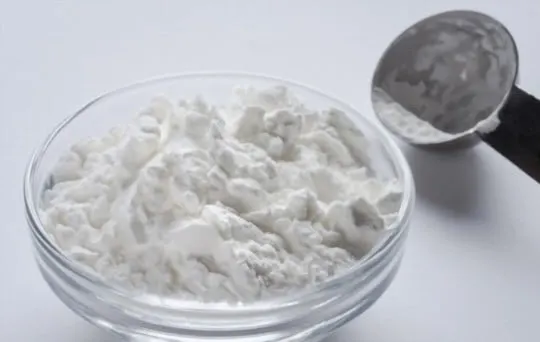
Cornstarch is a great option if you’re looking for a gluten-free flour alternative.
Although it doesn’t have the same protein content as wheat flour, it can be used to thicken sauces, make pie crusts, and coat chicken or fish before frying.
Cornstarch is also a good substitute for rice flour in recipes.
When combined with tapioca or potato starch, it can mimic the texture of rice flour while still providing the lightness and fluffiness you want in cakes and other baked goods.
To substitute rice flour with cornstarch, use half the amount of cornstarch. For example, if a recipe calls for 1 cup of rice flour, you would use 1/2 cup of cornstarch instead.
2 – Potato Starch
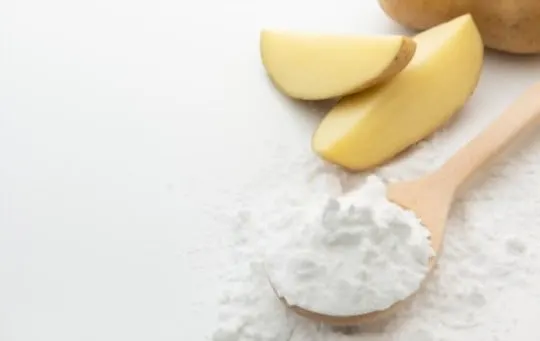
Potato starch is a common ingredient in many gluten-free recipes, as it can be used to replace rice flour.
However, potato starch is not always the best choice for substituting rice flour.
While it may work well in some recipes, it can make the final product dense and heavy.
In addition, potato starch does not absorb flavors as well as rice flour, so it may not be the best choice for highly seasoned dishes.
You can replace rice flour with an equal amount of potato starch. For instance, if your recipe requires 1 cup of rice flour, use 1 cup of potato starch as a substitute.
3 – All-Purpose Flour

All-purpose flour can be used as a substitute for rice flour in many recipes.
When substituting all-purpose flour for rice flour, it is important to keep the following in mind: All-purpose flour is made from wheat, while rice flour is gluten-free.
All-purpose flour also has a higher protein content than rice flour.
As a result, all-purpose flour will produce a denser baked good than rice flour.
When substituting all-purpose flour for rice flour, it is best to use a 1:1 ratio.
For example, if the recipe calls for 1 cup of rice flour, use 1 cup of all-purpose flour.
Remember that the final product may be slightly heavier and less tender than if made with rice flour.
4 – Sorghum Flour
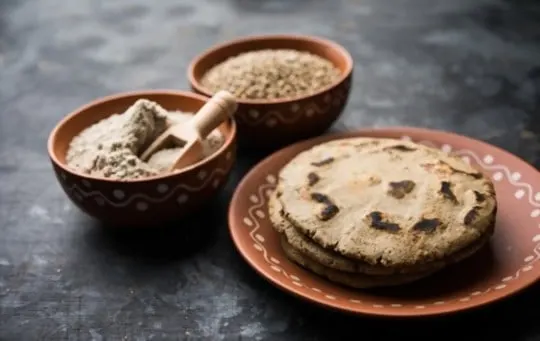
Sorghum flour is a good option if you’re looking for a gluten-free flour substitute.
It’s made from whole grain sorghum and has a light, slightly sweet flavor.
You can use it in place of rice flour in most recipes, and it’s a good choice for baking.
Sorghum flour is available at most health food stores, and it’s also available online.
When substituting sorghum flour for rice flour, use a 1:1 ratio.
So if a recipe calls for 1 cup of rice flour, use 1 cup of sorghum flour instead.
Remember that sorghum flour doesn’t absorb liquids as well as rice flour, so you may need to add a little extra liquid to your recipe.
5 – Tapioca Flour
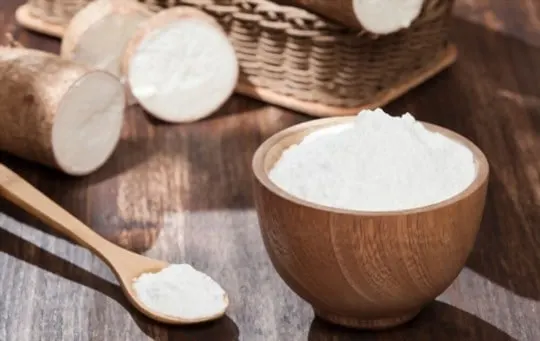
Tapioca flour is a starchy white flour made from the cassava plant.
It’s a popular ingredient in gluten-free and grain-free baking and has a similar consistency to wheat flour.
Tapioca flour can be used as a 1:1 replacement for rice flour in most recipes.
The main difference between the two flours is that tapioca flour is slightly sweeter and more viscous.
When substituting tapioca flour for rice flour, you may need to add an extra egg or two to your recipe to help bind the ingredients together.
You may also need to reduce the amount of liquid called for in the recipe by one-fourth.
These adjustments will ensure that your finished product has the same texture and flavor as if you had used rice flour.
Conclusion
Concluding, we would say that rice flour is an amazing gluten-free flour with a neutral taste.
It can be used in various recipes, from cakes and cookies to savory dishes.
However, if you are looking for a substitute for rice flour, several other options are available, including potato starch, tapioca flour, all-purpose flour, cornstarch, and sorghum flour.
Each of these flours has its unique properties, so be sure to experiment to find the one that best suits your needs.
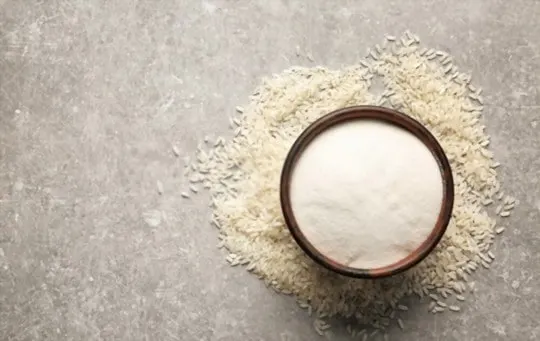
The 5 Best Substitutes for Rice Flour
Ingredients
- Cornstarch
- Potato Starch
- All-Purpose Flour
- Sorghum Flour
- Tapioca Flour
Instructions
- Pick your favorite substitute from the list above.
- Follow cooking directions for your selected substitute with the proper ratio of ingredients.

Andrew Gray is a seasoned food writer and blogger with a wealth of experience in the restaurant and catering industries. With a passion for all things delicious, Andrew has honed his culinary expertise through his work as a personal chef and caterer.
His love for food led him to venture into food writing, where he has contributed to various online publications, sharing his knowledge and insights on the culinary world. As the proud owner of AmericasRestaurant.com, Andrew covers a wide range of topics, including recipes, restaurant reviews, product recommendations, and culinary tips.
Through his website, he aims to inspire and educate fellow food enthusiasts, offering a comprehensive resource for all things food-related.

Leave a comment